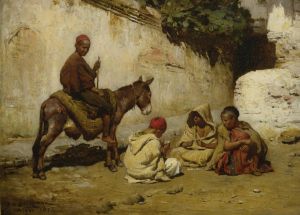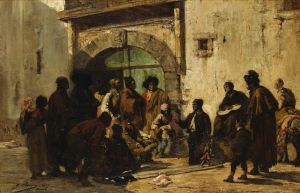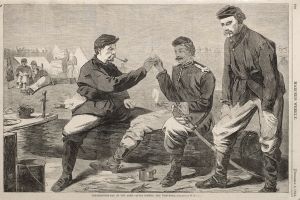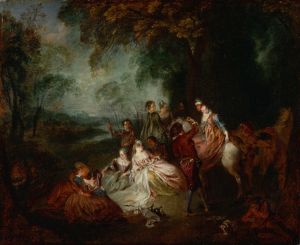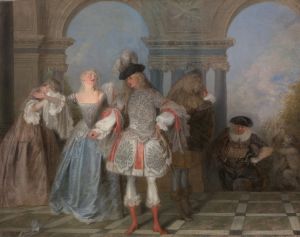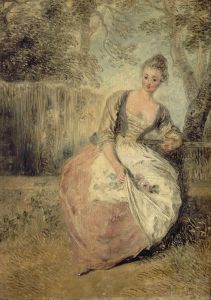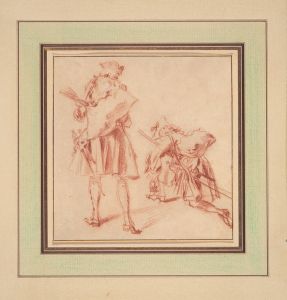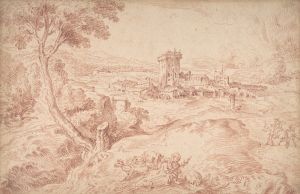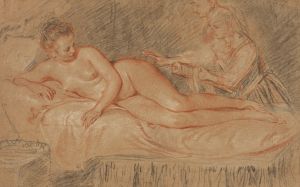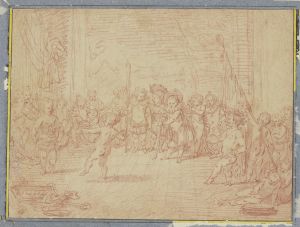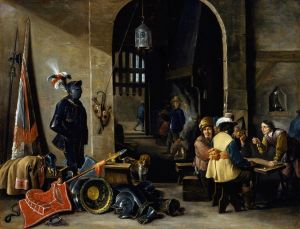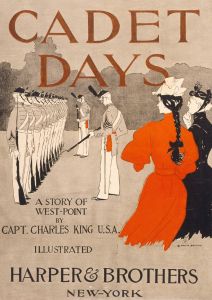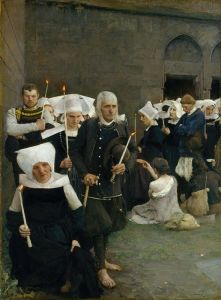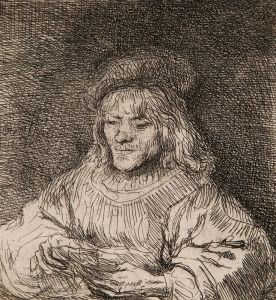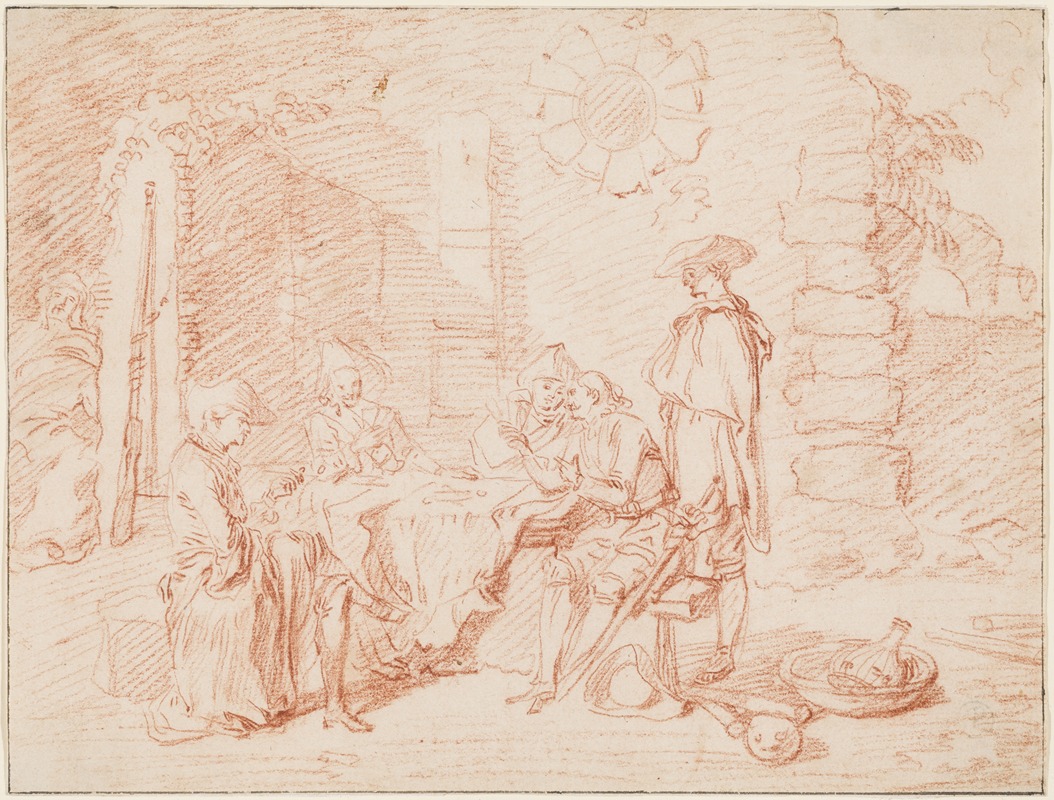
Soldiers Playing Cards in a Ruin
A hand-painted replica of Jean-Antoine Watteau’s masterpiece Soldiers Playing Cards in a Ruin, meticulously crafted by professional artists to capture the true essence of the original. Each piece is created with museum-quality canvas and rare mineral pigments, carefully painted by experienced artists with delicate brushstrokes and rich, layered colors to perfectly recreate the texture of the original artwork. Unlike machine-printed reproductions, this hand-painted version brings the painting to life, infused with the artist’s emotions and skill in every stroke. Whether for personal collection or home decoration, it instantly elevates the artistic atmosphere of any space.
Jean-Antoine Watteau's Soldiers Playing Cards in a Ruin is a painting attributed to the French Rococo artist, known for his mastery in capturing scenes of everyday life and theatricality. Watteau (1684–1721) is celebrated for his innovative approach to composition, color, and subject matter, often blending elements of realism with poetic and atmospheric qualities.
This particular work depicts a group of soldiers engaged in a card game amidst the remnants of a ruined structure. The painting reflects Watteau's interest in military themes, which he explored in several works during his career. These military scenes often portrayed soldiers in moments of rest or leisure rather than in active combat, offering a more humanized and intimate perspective on the lives of soldiers. In Soldiers Playing Cards in a Ruin, the focus is on camaraderie and the mundane aspects of military life, rather than the violence or heroism typically associated with war.
The setting of the painting—a ruin—adds a layer of historical and symbolic depth. Ruins were a recurring motif in 17th- and 18th-century art, often evoking themes of transience, decay, and the passage of time. In this context, the dilapidated structure may serve as a backdrop that contrasts with the soldiers' casual activity, highlighting the juxtaposition between the permanence of destruction and the fleeting moments of human interaction.
Watteau's technique in this work demonstrates his characteristic use of soft, diffused lighting and delicate brushwork. His ability to capture textures, such as the roughness of the stone ruins and the fabric of the soldiers' uniforms, is evident. The composition is carefully balanced, with the figures arranged in a way that draws the viewer's eye across the scene, creating a sense of intimacy and immediacy.
The exact date of the painting's creation is not definitively known, but it is believed to have been produced during Watteau's mature period, when he was exploring a variety of themes beyond his more famous fêtes galantes. The painting is often noted for its subdued color palette, which contrasts with the brighter tones seen in some of his other works, reflecting the somber and reflective mood of the scene.
As with many of Watteau's works, the provenance of Soldiers Playing Cards in a Ruin is not entirely clear, and its attribution has been a subject of scholarly discussion. However, it remains an important example of Watteau's ability to infuse seemingly ordinary moments with a sense of beauty and significance.





